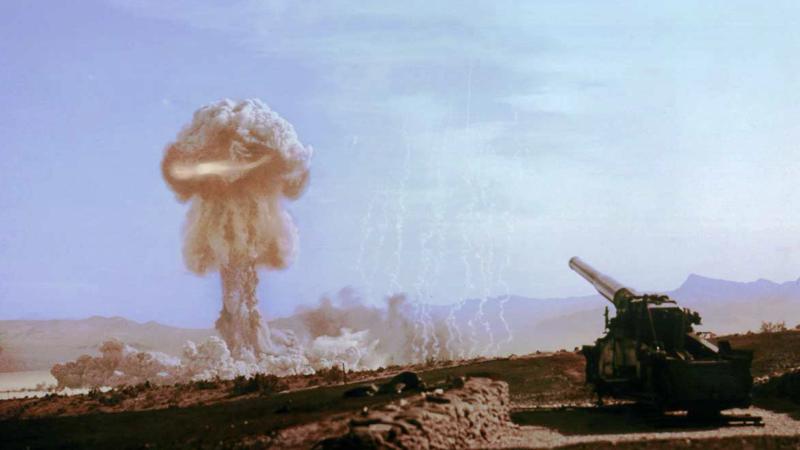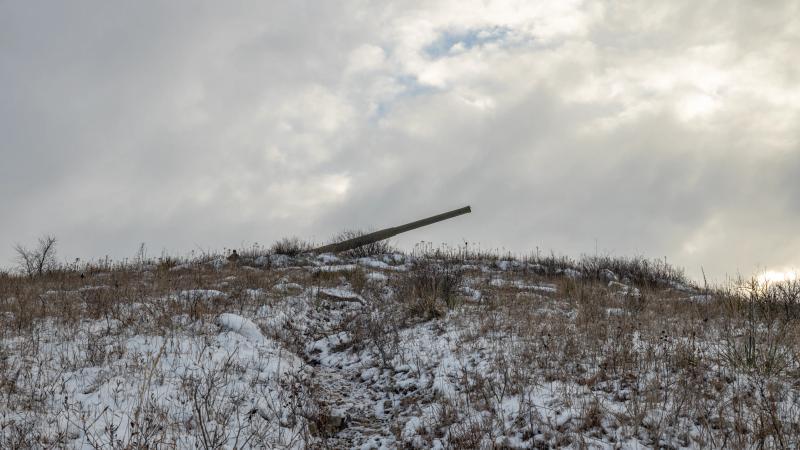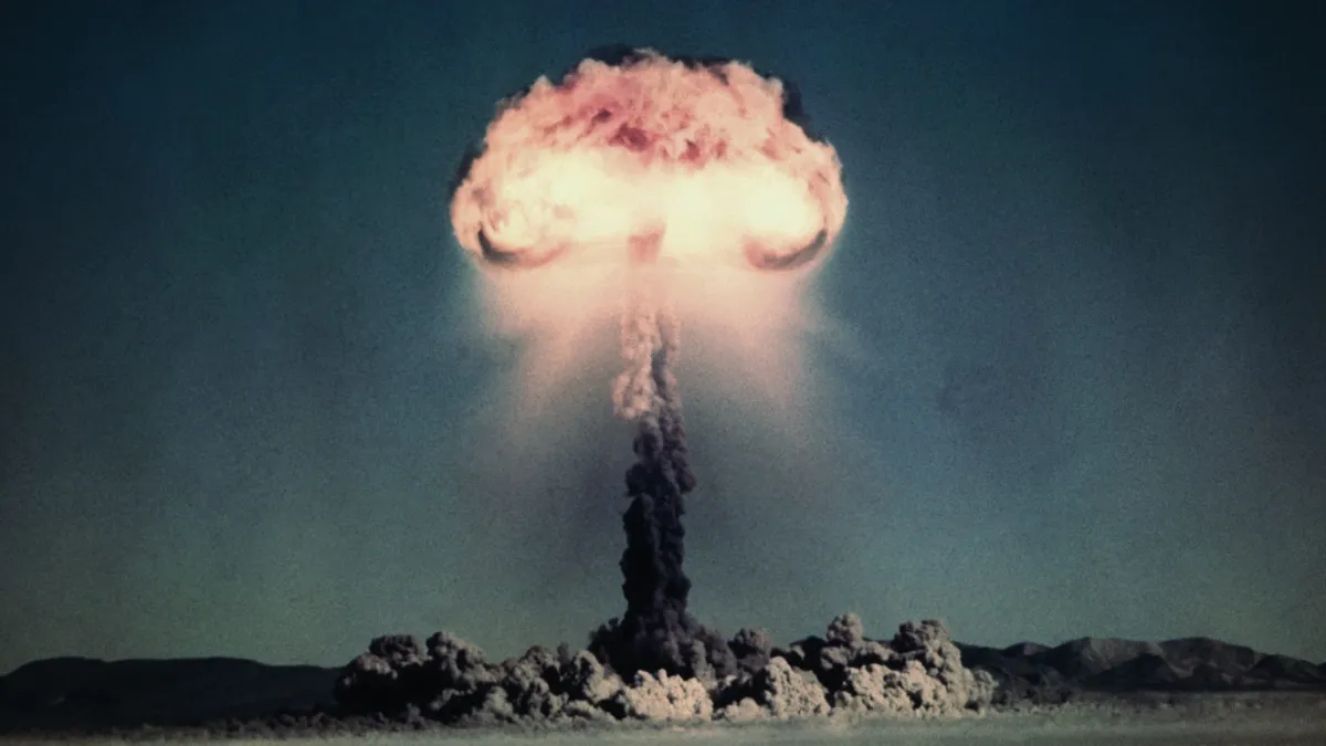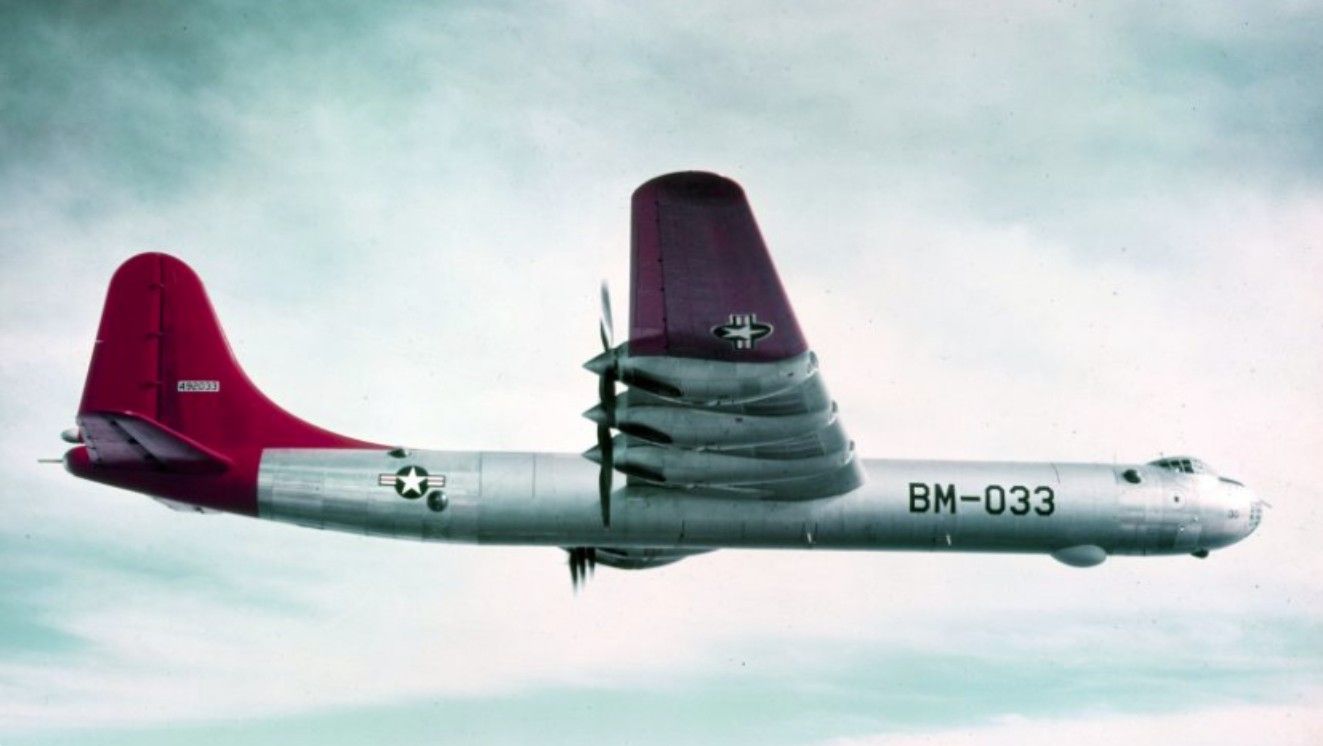ATOMIC ANNIE: THE ARMY'S NUCLEAR ARTILLERY CANNON HISTORY

In the middle of the Cold War, the U.S. Army built one of the most jaw-dropping weapons that was ever tested: a nuclear artillery cannon, known as the Atomic Annie.
It was a cannon that had the capability to fire an actual nuclear bomb. The Atomic Annie was the kind of weapon that made headlines, terrified enemies, and even confused allies.
The design of the Atomic Annie was enough to make history in and of itself, but the wildest part? It only ever fired one nuclear shell in its entire history.
Just one. One test. One explosion. Then, it faded into military history. Forever.
So, why was Atomic Annie built during the Cold War if it was only fired once, just for a test? That’s what we want to know.
Atomic Annie: Design and Purpose as a Nuclear Artillery
In the early 1950s, tensions between the United States and the Soviet Union were at an all-time high. World War II was over, but there was a new kind of war – the Cold War, and it was heating up fast.
Both the United States and the Soviet Union were racing to build bigger, more powerful weapons, especially nuclear ones. And that's where the Atomic Annie enters.
Also known as the M65 Atomic Cannon, the Atomic Annie was a beast. It was over 80 feet long, weighed approximately 86 tons (equivalent to 173,000 pounds), had a width of 16.1 feet, and required two massive trucks to tow it—one at the front and one at the back. Additionally, it had a range of up to 30 miles, and a top speed of 30 mph.
It was designed to fire a 280mm nuclear shell, which measured approximately 11 inches in diameter and weighed over 800 pounds. That shell carried a nuclear warhead that was capable of creating an explosion roughly the size of the one that was dropped on Hiroshima in 1945.
When the Atomic Annie was fully assembled, it looked more like a piece of industrial equipment than a battlefield weapon. The idea for the nuclear artillery cannon was simple, but absolutely terrifying.
If war broke out with the Soviets in Europe, American troops could roll this cannon up to the front lines and fire a nuclear strike right from the battlefield.

Operation Upshot–Knothole: Grable Test and Atomic Annie
On May 25, 1953, the U.S. Army rolled the Atomic Annie out into the Nevada desert for a test. They called the operation "Upshot–Knothole Grable" – a somewhat cumbersome name. This marked the beginning of a series of nuclear tests conducted that year.
At exactly 8:30 AM, the soldiers fired the cannon, and the rest is history.
The nuclear shell flew through the air and landed 7 miles away, detonating in a giant flash of light and a huge mushroom cloud. The explosion was around 15 kilotons.
The whole thing was filmed. As a matter of fact, if you’ve ever watched old footage with a mushroom cloud booming out of a desert with soldiers ducking nearby – that’s probably the Atomic Annie.
After the test, military brass and scientists were surprised by its success. The cannon worked. The nuke exploded. The target area was wiped out.
So… what happened next?
Retirement of Atomic Annie: Reasons and Legacy
As impressive as the Atomic Annie was, the military never used it again due to some serious problems.
First, it was huge and slow. Therefore, moving it across a battlefield wasn't quick or easy.
Secondly, it also took a full crew and a lot of time to set it up. Speed and flexibility on the battlefield are important, and this was the major issue. If the enemy moved, the Atomic Annie couldn’t just pack up and chase after them.
Additionally, technology was evolving fast. Not long after the Atomic Annie’s test, the military began to focus more on rockets and missiles, which could be fired farther away. It didn’t need to be carried around like a carnival ride, like what they did for the Atomic Annie.
Thirdly, and maybe most importantly, nuclear weapons on the battlefield were just a bad idea. Using a nuke close to your own troops – even just a small one – was extremely risky. Radiation, fallout, and civilian casualties were a serious concern.
By the late 1950s, everyone had quietly moved on. Today, most of the M65 atomic cannons have been retired, scrapped, or are now inside museums.
But at least the Atomic Annie had her moment… even if it was short lived.

Atomic Annie: Symbolism During the Cold War Era
The Atomic Annie became a symbol of Cold War thinking, as at the time, U.S. military leaders were obsessed with staying ahead of the Soviet Union at all costs.
Bigger bombs. Bigger guns. Just bigger everything.
They even thought of a “nuclear backpack.” Luckily, cooler heads eventually prevailed. Soon, the military realized that nuclear war couldn’t be “tactical” because no one would win.
Thus, the Atomic Annie remains as one of the most epic relics from that era. It’s just a one-of-a-kind cannon that fired a real nuclear bomb only once in a desert.
You can see the Atomic Annie on display at various military museums in the United States. But nothing beats that day in 1953 when she got her chance to roar.
Read next:
- When Bats Became Bombs: The Unbelievable Story of Project X-Ray
- These Are the Best States for Military Retirees in 2025
- Netflix Documentary, Air Force Elite: Thunderbirds, Takes Viewers Behind the Scenes
Sources:
BY ALLISON KIRSCHBAUM
Veteran, Military History & Culture Writer at VeteranLife
Navy Veteran
Allison Kirschbaum is a Navy Veteran and an experienced historian. She has seven years of experience creating compelling digital content across diverse industries, including Military, Defense, History, SaaS, MarTech, FinTech, financial services, insurance, and manufacturing. She brings this expertis...
Credentials
Expertise
Allison Kirschbaum is a Navy Veteran and an experienced historian. She has seven years of experience creating compelling digital content across diverse industries, including Military, Defense, History, SaaS, MarTech, FinTech, financial services, insurance, and manufacturing. She brings this expertis...



